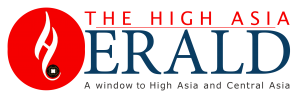German geographer and scholar’s new book is a treasure trove of ethnography and ethnogeography
By Farman Ali
For centuries, High Asia and Central Asia have captivated geographers, historians, anthropologists, explorers, secret agents and colonial powers, serving as a pivotal arena for the players of the ‘Great Game. Numerous books have been written by Western authors, often tainted by biases and colonial perspectives that stereotype the peoples, cultures, and vast landscapes of these regions. In contrast, German scholars, anthropologists, and geographers such as Karl Jettmar and Georg Buddruss have made remarkable, objective contributions to the studies of the peoples inhabiting the Pamir Knot. Their extensive research on human geography, anthropology, archaeology and the socio-political dynamics of high mountain regions in Central and High Asia has provided insightful and scientific accounts of the peoples, and their cultures. They have at the same time exposed the colonial interferences, competition for dominance and capture of land and resources altering geographies and societies to serve colonial and imperialist interests.
Among these distinguished scholars is Professor Dr Hermann Kreutzmann, who has dedicated his life to uncovering truths about these regions buried in extensive documents, monographs, archival materials, and military records. Prof Kreutzmann’s explorations have taken him across the mountainous terrains of Xinjiang, Gilgit-Baltistan, Chitral, the Pamir Knot, Central Asia, and cities like London and Moscow. Over the years, he has authored numerous books, articles, and chapters that shine light on the complex history and geography of Central Asia, High Asia, and South Asia.
Treasure Trove
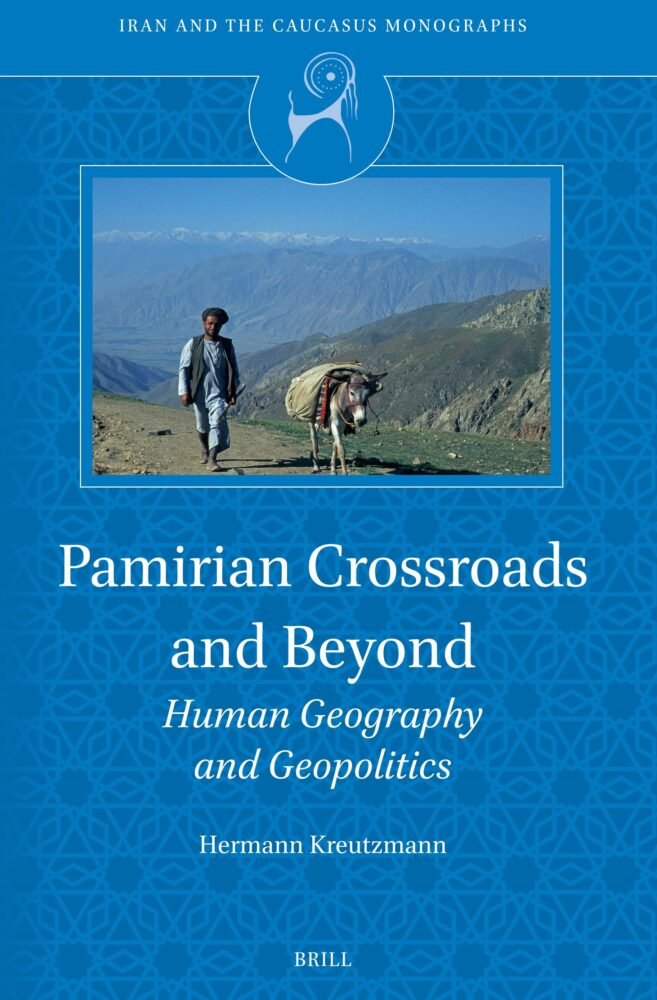
Professor Kreutzmann’s latest contribution is the book titled “Pamirian Crossroads and Beyond: Human Geography and Geopolitics,” published by Brill. The 740-page volume encompasses 30 research articles published between 1998 and 2022. The book is an encyclopaedic resource on the ethnography and ethnogeography of diverse peoples inhabiting a vast region stretching from Central Asia through the Hindukush to the Indian Subcontinent and beyond. It addresses a broad spectrum of subjects, from geopolitics to the impact of global trade across the Hindukush-Karakoram Highway; boundary-making and delimitation practices to the complexities surrounding Kashmir and Gilgit-Baltistan. It also explores the linguistic diversity in the Pamirs and Eastern Hindukush, the vanishing traditional pastoralism practices and the impact of neoliberal development and modernization; the transformation of high-altitude livestock-keeping in China; and climate change impacts in the Himalayan Arc.
What sets this work apart is the unique primary data collected by Kreutzmann himself during his extensive fieldwork, making it an invaluable first-hand source. The essays are meticulously academic, avoiding any semblance of journalistic simplification.
In the foreword of the book, Professor Garnik S. Asatrian, the chief editor of the book “Iran and the Caucasus Monograph Series” highlights Professor Emeritus Kreutzmann’s scholarly contribution and wide-ranging expertise, describing it ‘’a treasure trove and an encyclopaedic resource on various aspects of cultures, everyday life, social structures, local economies, language situations, and native traditions of peoples across different socio-cultural and civilizational environments at varying levels of economic development.
“Much of the material in this book is unique, as they are based on data personally collected by Professor Kreutzmann through rigorous and meticulous fieldwork. As such, the work stands as a first-hand source on a wide variety of issues about this expansive geographic area, presented in a strictly academic style devoid of journalistic trivialization.”
Prof Asatrian emphasizes that true geopolitical analysis requires a deep understanding of human geography, which Kreutzmann’s work exemplifies. His work sets a high standard by grounding geopolitical studies in thorough research and meticulous study of ethno-demographic, socio-economic, religious, and linguistic aspects, thereby avoiding mere speculation.
As Professor Asatrian notes the book will serve as a critical resource for both specialists in Oriental studies and ethnogeography but also students and general readers interested in the geopolitics of Central, High and South Asian regions for decades to come.
‘Opera Minora’
Professor Eckart Ehlers, in a long introduction titled “Opera Minora: A Tribute to Geographical Concentration and Inquisitiveness,” praises Professor Kreutzmann’s scholarly contributions as essential to understanding the long-neglected and lesser-known region of High Asia, traditional societies and their interactions with natural environments.
He further elaborates on the distinctive qualities of Kreutzmann’s early work from Yak-keeping in Hunza in 1986 to his recent publications: He has demonstrated unwavering dedication and perseverance in understanding the complexities of High Asia. Kreutzmann embodies the classical geographer, engaging in countless travels and prolonged stays in High Asia, extensive research in the India Office Library in London, the Russian Academy of Science, Moscow, and other significant archives. His findings are enriched by historical documents, maps, and statistical data, which provide a robust foundation for understanding the region’s past and present geopolitical dynamics.
His work goes beyond mere observation, delving into the traditional knowledge systems, rural practices, and social structures of the regions he studied. Kreutzmann’s approach is characterized by a deep respect and understanding of the local populations, facilitated by the support of his wife and research companion, Sabine Felmy, the author of Voices of the Nightingale and researcher in her own right, who played a crucial role in addressing gender-related issues and accessing the often-hidden aspects of these societies.
According to Prof Ehlers, Kreutzmann’s ability to intertwine fieldwork with historical research, resulting in a deeply insightful analysis of the region’s landscapes and societies. This combination of space and time, geography and history, is a hallmark of Kreutzmann’s work.
As Prof Ehlers rightly sums it up: “Kreutzmann’s ‘Opera Minora’ transforms into major contributions to an urgently needed better understanding of a region of increasing strategic and geopolitical relevance.”
The Pamirian Crossroads trilogy and other works
Some of Prof Kreutzmann’s notable works include the trilogy on Pamirian Crossroads: Hunza Matters: Bordering and Ordering between Ancient and New Silk Roads (2020), which examines the transformation of the Hunza Valley through changing infrastructure, environmental resource utilization, and socio-political dynamics from colonial times to the present. Wakhan Quadrangle: Exploration and Espionage during and after the Great Game (2017) delves into the geopolitical significance of the Wakhan region during the Great Game, exploring how colonial powers vied for dominance in this remote area which became an arena of colonial competition when Afghanistan, China, Great Britain and Russia struggled for dominance in a remote mountain region where only scattered communities lived in a challenging environment. Pamirian Crossroads: Kirghiz and Wakhi of High Asia (2015) explores the importance of the Pamirian Knot during the ‘Great Game’ in High Asia and examines how this mountainous borderland became marginalized within Afghanistan, Pakistan, China, and Tajikistan.
The book delves into the historical and contemporary interventions from imperialism to post-colonial developmentalism, colonial boundary-making, and how it has divided communities and shaped the socio-political and economic conditions of the Kirghiz and Wakhi people living in these remote regions.
It underscores the ecological continuity of the Pamirs despite shifting geopolitical landscapes and explores how externally imposed modernization strategies have triggered socio-political reforms and minority policies.The work provides a comprehensive look at the complex interplay of history, geography, and politics in shaping the lives of the Kirghiz and Wakhi people.
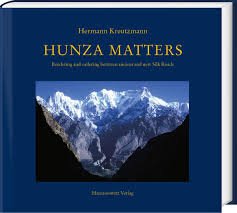
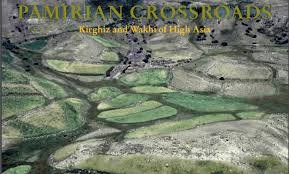

Also read: Contested Commons under Threat
In his latest article, Contested Commons under Threat Professor Kreutzmann examines the UN’s designation of 2026 as the International Year of Rangelands and Pastoralists, aiming to spotlight neglected regions and marginalized communities. He focuses specifically on the Pakistan-controlled region of Gilgit-Baltistan, critiquing the roles of bureaucrats, politicians, and neoliberal development experts who are neglecting these communities.
The article highlights the critical features of pastoralism within the development arena, addressing challenges such as declining pastoral workforces, land encroachment, and shifting responsibilities in pasture management. It underscores the need for increased support and policy intervention to ensure the sustainability and well-being of pastoral communities.
Professor Kreutzmann in his paper Pamir Peace Park – Antecedents and Prospects, advocates for the establishment of peace parks in high mountain areas as instruments for transboundary cooperation in conflict-prone regions of Central Asia. He posits that peace parks can play a pivotal role in peacebuilding by promoting demilitarization of border areas, fostering collaboration, and facilitating the exchange of expertise and knowledge among neighbouring countries. Additionally, peace parks can support nature conservation and ecotourism initiatives, providing economic and environmental benefits while serving as neutral grounds for reducing regional tensions.
Peace parks can play a pivotal role in peacebuilding by promoting demilitarization of border areas, fostering collaboration, and facilitating the exchange of knowledge among neighbouring countries … support nature conservation and ecotourism initiatives, providing economic and environmental benefits while serving as neutral grounds for reducing regional tensions
Prof Dr Hermann kreutzmann
Also read: Hunza Matters: Unmaking and Making
His work has not only advanced academic understanding but has also provided valuable perspectives for policymakers and development practitioners working in these challenging environments.
In a chapter in the book Complex Management of Water and Agriculture: The Case of the Hunza-Karakoram Region Professor Kreutzmann delves into the intricate dynamics of water management in the Karakoram region, particularly focusing on the Hunza Valley. It highlights how water rights and irrigation practices have historically underpinned the expansion of oasis agriculture since the colonial conquest in the late 19th century. The study explores how these traditional water management systems reflect community regulations and societal structures of authority and domination.

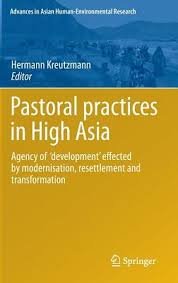

However, recent shifts towards non-agrarian income sources and the diminishing importance of agriculture have transformed existing structures, weakening the strict application of inherited water management practices. This transformation poses challenges to the sustainability of agricultural practices and necessitates adaptive strategies to maintain water resource management amidst evolving economic landscapes.
In the chapter of the book, Human Diversity, Identities, and Indigeneity in Contrasting Mountain Landscape Kreutzmann explores the multifaceted nature of mountain livelihoods across various geographical, political, historical, and cultural frameworks. The chapter emphasizes the importance of recognizing the unique human dimensions of mountain landscapes to foster more effective and culturally sensitive sustainable development practices.
In the chapter Passage to Kashgar: People, Roads, and Commodities, the scholar examines the role of infrastructure development, particularly roads and trade corridors, in facilitating imperial modernization and geopolitical dominance. Focusing on the passage from the Karakoram to Kashgar, Prof Kreutzmann discusses how enhanced geographic mobility has been a key strategy for imperial powers to assert control. The narrative highlights the forceful interventions by external actors that compelled isolated communities to abandon traditional seclusion.
Through the case study of Safdar Ali Khan, the Mir of Hunza, the chapter illustrates the struggles of small principalities to maintain autonomy amidst competing geopolitical interests from Afghanistan, Kashmir, and Xinjiang. It underscores how strategic locations like Hunza became pivotal arenas for imperial contests, shaping the socio-political landscape of the region.
In the article Shrinking Pastoral Spaces, he explores the phenomenon of shrinking pastoral spaces within the broader Himalayan Arc, encompassing major mountain systems such as the Tien Shan, Pamir, Hindukush, Karakoram, Himalaya, and Kun Lun Shan Mountains. It discusses how limited geographical areas, combined with factors like interrupted migration routes, state regulations, settlement expansion, and modernization have led to the reduction of traditional pastoral practices. The study highlights the cultural conflict between mobile pastoral societies and sedentary modern development models as a “tragedy of responsibility.”
This concept refers to both state neglect and external interventions that undermine the sustainability and autonomy of pastoral communities. The work emphasizes the need for more inclusive and participatory approaches to development that respect and preserve traditional livelihoods amidst socio-cultural and environmental changes.
In the essay Pastoralism in Shimshal, the scholar addresses the challenges facing traditional pastoral practices in Shimshal Valley in upper Hunza, highlighting how the community adapt to environmental and social changes.
These works of Professor Kreutzmann offer extensive documentation and analysis of High Asia. Enriched with historical maps, diagrams, photographs, and statistical data, these works reflect his extensive research on human geography, sustainable development, and the socio-political dynamics of high mountain regions in Central and High Asia. These works continue to influence and inform scholars, students, and policymakers in these regions and around the world.
Academic responsibilities
Even after his retirement, Professor Kreutzmann continues his scholarly pursuits as Professor Emeritus at the Department of Earth Sciences, Free University, Berlin. His extensive body of work includes over 25 books and more than 250 published research papers, covering topics such as water resource management, sustainable development, and regional studies of Central, High, and South Asia.
Awards
He serves on editorial boards for publications like “Pastoralism Research, Policy and Practice,” “Journal of Mountain Science,” and “Mountain Research and Development.” His contributions have been recognized through numerous awards and honours including Tian Shah Prize awarded by the Chinese government in 2010, the highest award for foreigners in Xinjiang. He is also an ‘Honorary member of the Geographical Society of Tajikistan since 2017. Gojal Educational and Cultural Association also gave him an award in 2016 in recognition of his research work.

Farman Ali is the Executive Editor of The High Asia Herald and Baam-e-Jahan, a bilingual online news portal, bringing over 30 years of distinguished experience in journalism. Throughout his career, he has held prominent editorial roles at some of Pakistan’s leading English dailies, including Dawn Islamabad, where he served as News Editor and The Express Tribune Islamabad, as its Editor of the City Desk. Known for his insightful and balanced commentary, Farman Ali’s expertise spans a wide range of topics, including politics, art and culture, literature, climate change, and social issues, making him a significant voice in Pakistan’s media landscape.

The High Asia Herald is a member of High Asia Media Group — a window to High Asia and Central Asia
